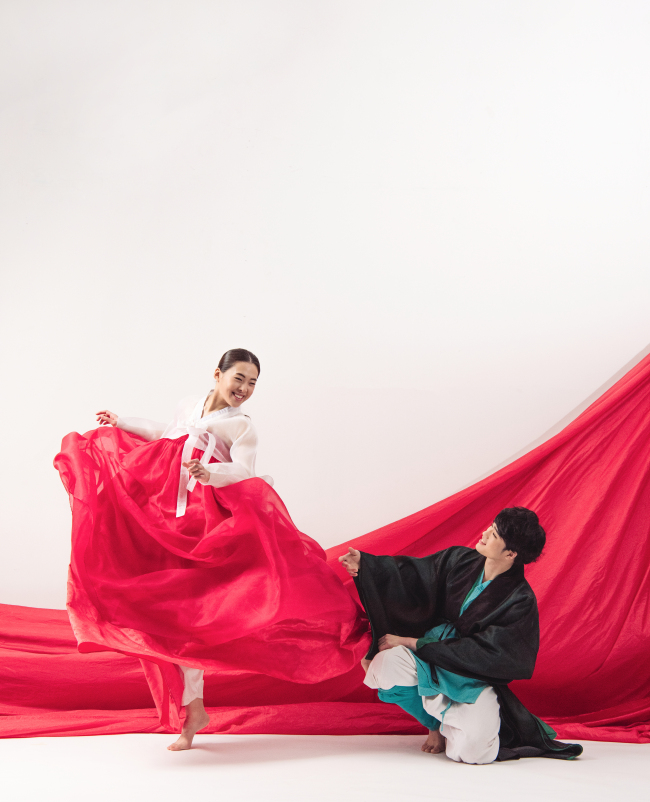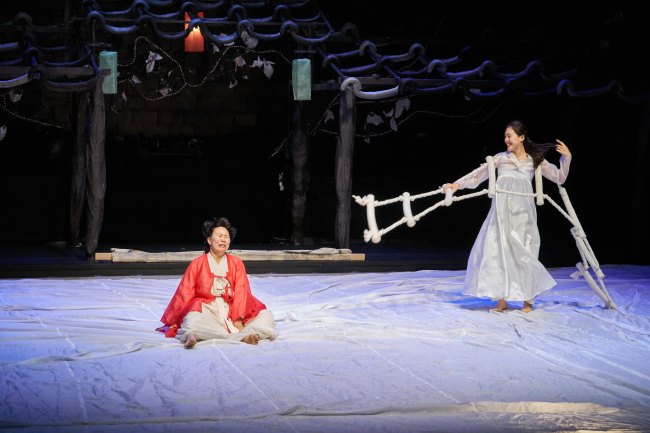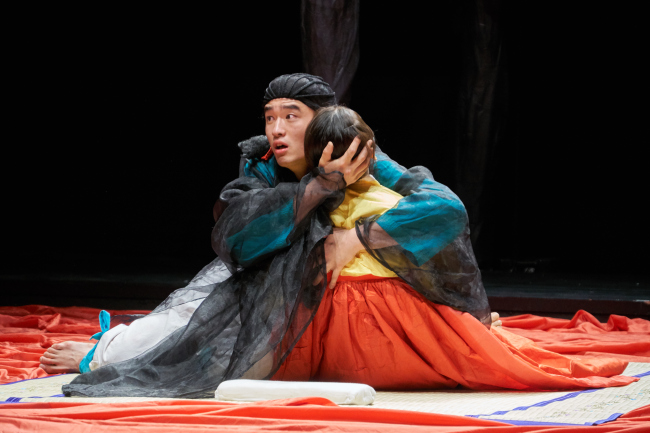The moment Mercutio makes an appearance as a drag queen, you know you are in for a different kind of treat.
Director Oh Tae-suk’s interpretation of William Shakespeare’s “Romeo and Juliet” takes on a completely new form; one of Korean traditional madanggeuk (outdoor play and performance) that combines humor and almost musical-like dance performances.
 |
Promotion images for “Romeo and Juliet” (National Theater Company of Korea) |
Staged to the sound of gugak -- traditional Korean music -- the scene opens somewhat faithful to the work of Shakespeare: an armed quarrel between the Montagues and the Capulets.
What follows immediately is an exchange of quick banter that befits a comedy sketch. “Then there will be no mercy,” “No what?” “He said smash the,” “What’s that now?” “Beaten to a pulp,” “Pulp? Delicious.”
Of course, the great Shakespeare never shied away from a bit of humor in his works, and Oh’s version also combines color, sound and movement to recreate the masterpiece in the image of pre-modern Korea.
 |
A scene during a performance of “Romeo and Juliet” (National Theater Company of Korea) |
The exaggerated movements and line delivery, coupled with the slow motion fight between the Montagues and the Capulets sugarcoats the tragedy with comedy, and the audience are left snickering at what is supposed to have been a downer.
This is most well-represented in a scene following the death of Mercutio and Tybalt, where the previously-comical character of nurse wails miserably before announcing “I need soju!” What was supposed to be a sob-fest turns into comedy, as the nurse downs the entire bottle in one swig.
Comedic elements of the play ultimately heighten the eventual tragedy of the story in the final act, which is agitated by an additional tragic twist that is a departure from the original.
Oh’s version of Romeo and Juliet tells of the present through the tales of the past, depicting the unending cycle of hatred that persists today.
 |
A scene during a performance of “Romeo and Juliet” (National Theater Company of Korea) |
“It was a ‘purer’ time 400 years ago. Families may have been able to stop fighting over deaths of two children, but it may not be like that now,” he said.
The play’s premiere took place in 1995 as the inter-Korean tension was running high.
Had the situation at the time affected the play’s theme?
“Is it any different now?” laughed Oh. “The South-North divide and the tension are still there.
“I wouldn’t say there’s one interpretation for my works. That would be limiting their potential. Each audience would be free to draw his or her own conclusions.”
Oh did say that he wanted to add a flicker of hope amid what appears to be a tragic ending. Faint glimmers of fireflies appear in the darkness, hinting at the hope that a return to a purer time may be possible.
”Romeo and Juliet“ is staged by National Theater Company of Korea and Mokwha Repertory Company, which also produced the play. The play runs at Myeongdong Theater in Myeong-dong, Seoul until June 18.
Performances are at 7:30 p.m. on weekdays and 3 p.m. on weekends. Thursday and Sunday performances offer English-language subtitle. There is no performance on Tuesdays.
For tickets, which range from 20,000 won to 50,000 won, visit
www.ntck.or.kr or call 1644-2003.
A Q&A session will be held with Oh following the June 11 performance.
By Yoon Min-sik (
minsikyoon@heraldcorp.com)










